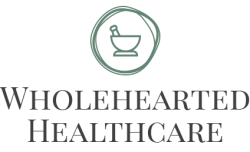Acne is often considered the bane of adolescence and puberty, and most of us can remember suffering through spots as teenagers. But what if you’re still getting spots as an adult?
Acne is caused when the sebaceous glands in the outer layer of skin produce too much sebum – the oily, waxy substance made up of sweat and dead skin cells. This can irritate cells that produce hair follicles. Bacteria also gets involved, and the result is inflammation and acne.
Recent research has suggested that hormones also play a major part in these events – particularly one called insulin-like growth factor (IGF-1).

Insulin and acne
Insulin-like growth factor 1 (IGF-1) is a hormone involved in cell growth. It’s regulated by insulin and produced throughout life, with the highest rates of production occurring during puberty. The lowest levels are during infancy and old age. However, high concentrations of IGF-1 are also found in women with acne.
There can be several reasons for increased levels of IGF-1. Consuming milk is a big trigger: it’s been found that milk stimulates the proliferation of sebocytes (sebum-producing epithelial cells) resulting in the development and progression of acne lesions. Pores become clogged by bacteria, leading to infection, redness, and swelling – a breakout.
Studies show that populations who have largely paleo diets – and no dairy – are far less likely to be affected by acne. Even whey protein may be problematic as it contains six different growth factors. Although this is helpful for increasing muscle mass, it has also been linked to breakouts.
Hormones and sugar
There’s a reason that acne is also known as ‘diabetes of the skin’. Higher levels of insulin in the bloodstream can lead to an increase in IGF-1, and the resulting increase in skin cell production.
Foods that cause an increase in insulin are those with a high glycaemic index, especially sugar and refined carbs. Candy, white bread, white potatoes and white rice are the worst offenders.
These foods cause the pancreas to go into overdrive, producing extra IGF-1 in order to rebalance blood sugar levels.
A high-sugar diet also influences cell proteins such as mTORC1, which in turn increases androgen hormone secretion. Androgens are male hormones that are also present in women (in smaller amounts). Androgens have a similar effect on the skin, causing the production of sebum and skin cell turnover to ramp up.
Supporting the liver
The liver is central to skin issues. Every day, we are exposed to toxins from the air we breathe, the food we eat, stress, pollution, medications, and other factors. All of these toxins must be processed by the liver.
However, if the liver is unable to keep up with this constant assault of toxins, its ability to remove them via the digestive system is impaired. Instead, toxins can be flushed out through either the lungs or the skin. Acne and other skin issues are usually a sign that the liver needs help.
Reducing intake of sugar, processed foods, and alcohol will help ease the burden on the liver. Hydration should also be increased, along with plenty of nutrient-dense whole foods and liver-supporting herbs.
Reducing insulin and inflammation through diet
The best way to reduce this inflammatory cascade is to stick to a low-carb, low-sugar diet with as few processed/refined foods as possible. Avoiding dairy is also helpful.
At the same time, increasing intake of healthy fats, vitamins, antioxidants, and quality protein is essential.
Those with acne are often found to have higher blood sugar levels, which leads to higher insulin, and higher levels of hormones. They also tend to be lower in certain nutrients, particularly chromium, selenium, vitamins A and E, and zinc.
Along with increasing sebum production, elevated blood glucose can damage collagen structures in the skin, which can contribute to premature aging.
Vitamin A plays an essential role in skin health, helping with cell turnover and function. It is stored in the liver and is also present in the skin, particularly in the sebaceous glands.
Good sources of vitamin A include liver, oily fish, and eggs. The precursor to vitamin A, beta carotene, is found in brightly-coloured vegetables such as carrots, peppers, spinach, and kale.
Vitamin E is the other major lipophilic vitamin that is delivered to the skin via the sebaceous glands, and can help to reduce oxidation in inflammatory acne. It also helps to keep hormones in balance and reduces the risk of skin damage that can cause acne scarring. Vitamin E is present in avocado, olive oil, nuts, seeds, and soy.
Zinc is also an essential element for skin health, helping to reduce inflammation, fight bacteria, and regulate hormonal production. Several studies found that treatment with oral zinc sulphate can help to reduce the occurrence and severity of acne breakouts.
Zinc is particularly high in shellfish, pumpkin seeds, oats, poultry, nuts and beans.
Omega-3 fats
Eating plenty of polyunsaturated fats is one of the most effective ways to reduce inflammation in the body. A high intake of omega-3 fatty acids can inhibit the production of proinflammatory cytokines in the skin, which has been shown to help reduce the incidence of acne. Omega 3 fats also reduce levels of mTORC1 and can help to maintain IGF-1, preventing the overproduction of skin cells). As a bonus, Omega-3 fatty acids are also antibacterial and can inhibit the growth of the bacteria that causes spots.
Unfortunately, most foods in the Western diet these days are higher in omega 6 fats, which can be converted to inflammatory chemicals in the body. This is why the correct ratio of dietary omega-6 to omega-3 fatty acids is so important.
Numerous studies show that populations who eat a diet rich in omega-3 foods – especially oily fish – have lower incidences of acne.
Linoleic acid and α-linolenic acid are two fatty acids in our body that cannot be synthesized by human cells, so they must be obtained by the diet. These two essential nutrients are precursors to omega-6 and omega-3 fatty acids. These fats are highest in walnuts, flaxseed, hempseed oil, and lean red meat.
Omega-3 fats are best sourced from oily fish (salmon, sardines, mackerel, fresh tuna, trout, and anchovies), nuts, and eggs. Taking a quality omega-3 supplement may also be beneficial.

The road to better skin
Everyone’s skin issues are different, and so too are your dietary needs. If you need help with revamping your own diet, reach out! I’m a qualified Toowoomba naturopath specialising in hormone-related skin issues. I’ll help get you on the road to healthier hormones, better skin, and feeling confident about your overall wellbeing. Book here to discuss.





